by Matt Konkle
Managing Editor
The calendar doesn't quite say it yet, but the whole thing sits just over the horizon this month.
Spring.
A season to get recharged after a long winter and to venture out of the house without a heavy jacket to enjoy some fresh air without an icy, cold blast.
It also may mean trips to the local garden shop for some mulch and grass seed to get the lawn ready, or perhaps the unpacking of patio or deck furniture in anticipation of the warmer weather to come. The tasks can really be somewhat endless.
For Jeep owners, this time of year is no different when it comes to taking a look at the vehicle following those long, dark, cold winter months.
How is the soft top holding up? Where am I storing the hard top this season? Does the interior look like a muddy, dirty mess? How can I add extra storage space for all these upcoming trips?
The questions can be somewhat endless as well.
So, now that the calendar has turned towards the warmer part of the pages, here are some of the top-selling products all geared towards getting your Jeep set for the season.
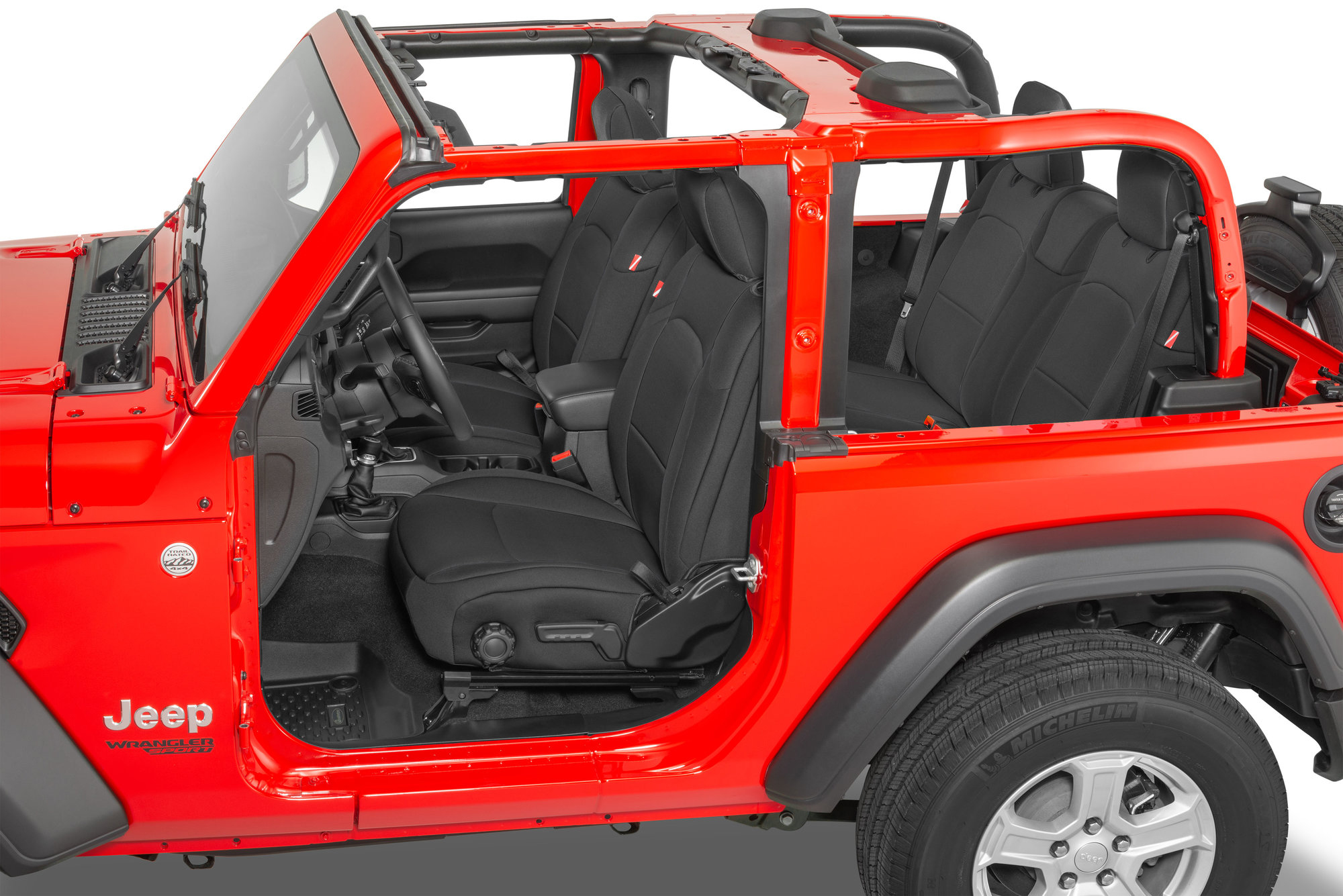
Seat Covers
We all love to imagine sunny spring days, a gentle breeze and the sweet smell of flowers no matter which way you turn. But while a great image, in reality not every spring day can be full of sun and fun. It is bound to rain at some point, and when it does then your seats could be in danger if the top is off your vehicle, or the windows are left open. Really, though, rain or shine those factory Jeep seats are under assault any time the top is off the vehicle.
So if you are still sitting on uncovered factory seats, then this season is a great time to get some highly protective seat covers. Whether your choice is weather absorbing and comfortable neoprene, highly breathable polycotton, easy to clean ballistic nylon, vinyl or great looking and soft leatherette, these covers will allow your Jeep seats to last longer and give you a little more insulation for the ride. Not only that, but covers are also easy to remove and clean when needed. Perfect for anyone’s on-the-go spring Jeep lifestyle.
A final benefit to adding protective seat covers inside your Jeep's cab is the ability to customize to nearly any look you want. Most covers have numerous color schemes that can match, for example, accent bezels you have done to the dash area or paint job you've done to the vehicle’s body tub. Or, perhaps, even the respective colors of your Jeep club. It's all up to you.

Floor Liners
The factory carpeting inside your Jeep is pretty competent at handling water should some find its way inside your Jeep. But dirt, grime, mud — all that other stuff isn’t very friendly with said carpet.
So the perfect solution going into these warmer months is picking out a nice set of floor liners to block out all that nasty stuff, and extend the life of your carpet.
Aftermarket floor liners simply fit over the existing carpet in the driver and passenger foot area, and are also available for back passenger footwell coverage as well as cargo area protection. What that means is most exposed carpeting areas now will have a ‘shield’ designed to really keep just about anything off it; rain, snow, mud, dirt. Not to mention those liners will also keep your feet from rubbing against the carpeting and prematurely wearing out the material.
Additionally, these days liners aren’t just some generic carpeted overlay that sits there and covers the factory carpeting. Most liners are custom designed to exactly fit your specific vehicle, and are available in a multitude of materials like rubber, thermoplastic and high-density tri-extruded—as well as carpeting—that all are able to trap and hold water or debris in place. Plus, they are simple to remove and clean when needed, which makes things so much easier than continually removing drain plugs to get water out of the vehicle. Or breaking out that scrub brush to attach muddy carpet stains.
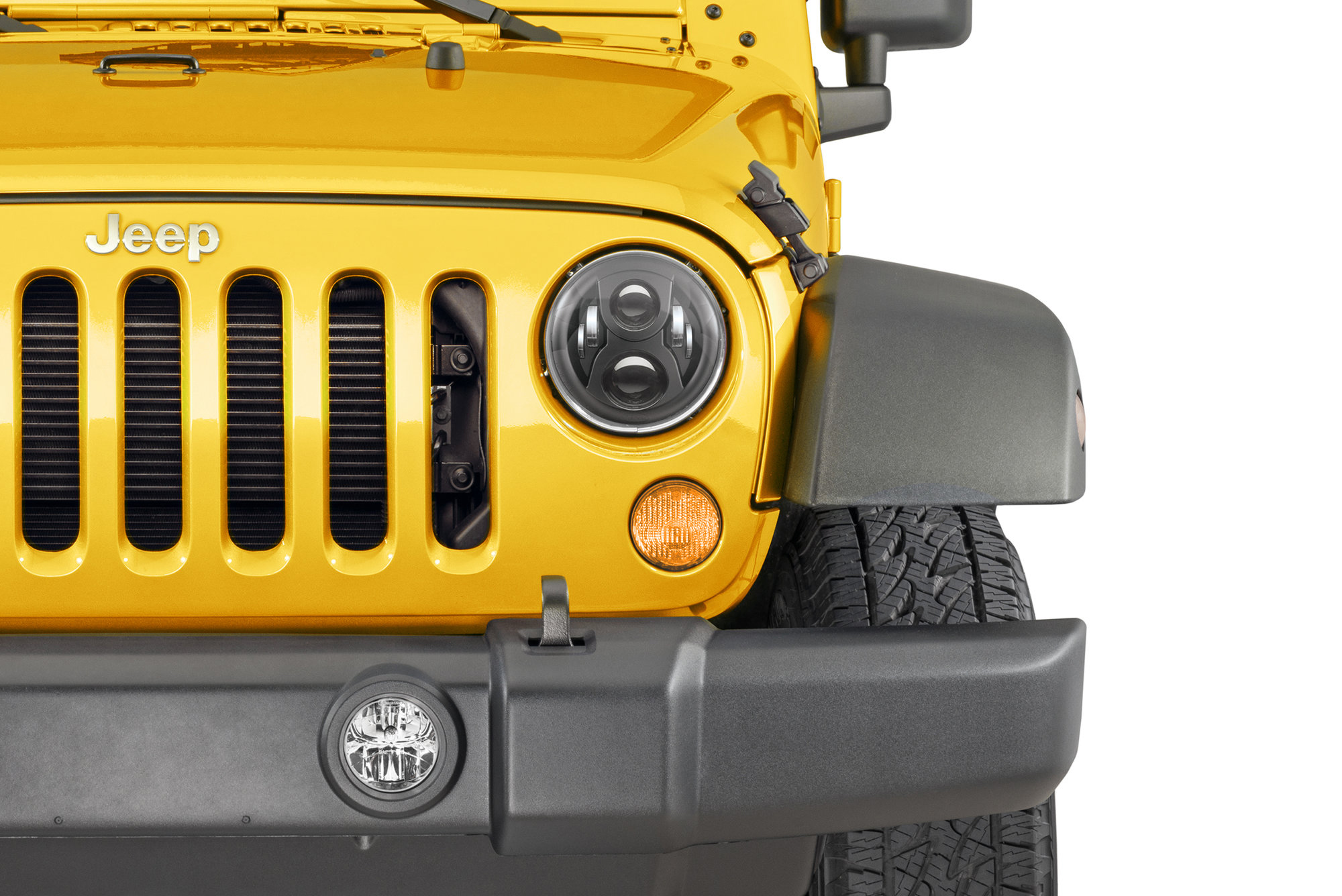
LED Lighting
Spring ahead means longer, lighter days as the weeks go on, but there will always come a time to use those headlights on your Jeep. Whether heavy fog, rain, or just simply the night, having powerful headlights that provide excellent illumination is certainly important.
So for anyone still rocking those factory halogen headlights, it is definitely a great time to swap over to replacement LED headlights.
Not only do LED headlights have a better light output and less battery draw, but they also throw a more accurate beam which resembles actual daylight. This helps keep you safer and makes for less driver-eye strain than your current factory halogens. Plus, LED headlights have an almost unlimited lifespan.
Additionally, LED headlights these days are more affordable than ever, and most brands out there utilize plug-and-play installation, so simply remove the front grille, pull out the current lights and replace them with your superior LED versions.
Finally, once those lights are installed, make sure to spend a few minutes and adjust them correctly. It is not a tough process and oncoming drivers will certainly thank you.
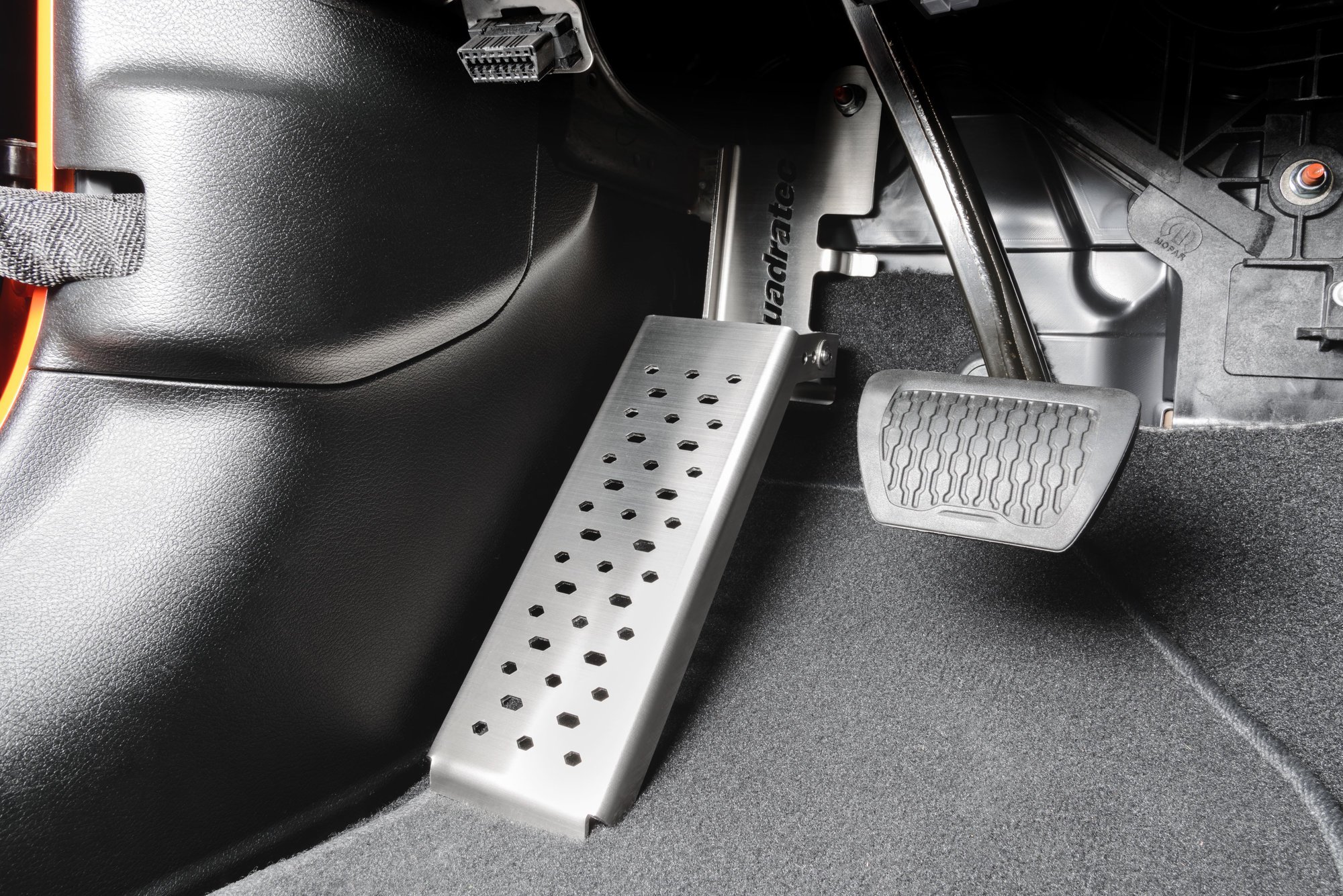
Dead Pedal
Finding the best way to situate your left foot may seem like a trivial thing while driving. Does it stretch back to the firewall? Or, maybe, tilt to the side and rest against that interior plastic?
Well, for those with Wrangler JK or JL vehicles, or a Gladiator JT, there is now another option that actually makes sense. And something you’ll grow to love once it is installed in the vehicle.
The dead pedal.
This product provides a great spot to plant your foot and reduce fatigue on those long drives, or drawn-out trail days. Plus, they install quickly with no drilling or additional modifications — getting you on your way faster to wherever your adventures lead for the day.
While they (obviously) only work on automatic transmissions, these dead pedals do play nice with most floor liners or carpeting systems.

Interior Storage
So you are pulling off that soft top or hardtop, getting ready for a nice sunny weekend trip, when it crosses your mind that you need somewhere to store your valuables when you are away from the vehicle.
After all, open cab space is amazing when driving, but not so much for safe storage. So where are you going to store those valuables that you just can’t take with you? You don’t just want to leave them stuffed under the seat and hope they are there when you get back, right?
A topless Jeep makes for a tempting target for would-be thieves. Especially for those who know a Jeep does not have many spots to store things inside the cab. Sure you may have a lockable plastic glove compartment, or center console, but the important word there is plastic. Not much in the way for a thief to quickly gain access and take your prized possessions.
So, to keep all that stuff safe, a popular summer essential is a high-quality lockable storage unit. We’re talking products like under seat metal locking units, replacement lockable center consoles, locking metal glove boxes, cargo security enclosures and even tailgate locking boxes. All heavily constructed units that will deter potential thieves from poking around too long.
Many of these applications can be installed without drilling and, once in place, cannot be opened without a key, while others (like center storage consoles) may require drilling for proper installation. Regardless, the heavy gauge steel in these storage solutions withstand abuse so you'll have peace of mind any time you are parked during your trip, and away from your topless Jeep.
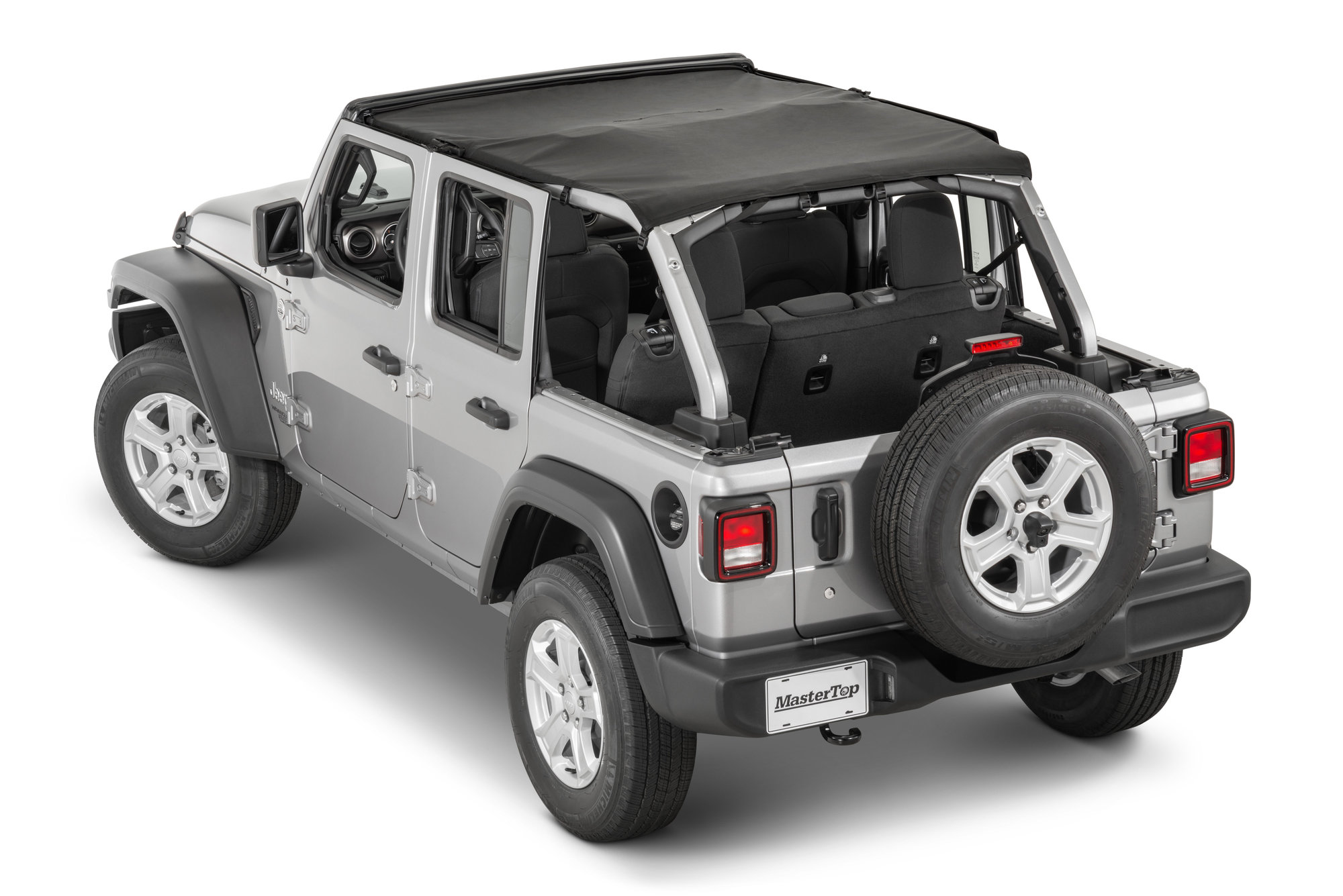
Soft Accessories
No one says that you have to wear that soft or hardtop all year long. Sure, those colder months are pretty demanding on having one of those tops, but the warmer spring, into summer, months are definitely more flexible.
For many, that means taking off their soft or hardtop and adding a bimini top, as well as cab curtain and back tonneau cover.
If you are not sure what those are, it is pretty simple.
Easy and painless to install, a bimini top sits right above your head while not obstructing side or rear views. This means it can also help reduce wind noise while still allowing an acceptable amount of airflow through the cabin.
Many of these brief tops attach with a channel to the windshield frame (similar to a full soft top) and then utilize hook and loop straps to wrap around multiple roll cage points. This keeps the top secure and helps eliminate any flapping. Additionally, depending on the brand, you can even choose the type of material as some match the factory fabric, while others offer vinyl or mesh.
There are also top coverage options that include just the driver and passenger, or longer versions that cover nearly the entire length of the vehicle—great for four-door owners who travel with extra passengers.
Cab curtains can be made of that same material and attach similar to the bimini top around roll cage bars, then hang down behind your head to help enclose the cabin. Tonneau covers then seal up the rear cargo area, similar to the way you can cover up a truck bed.
When those three pieces are installed, they give the vehicle an almost a truck-like appearance with an enclosed cab and flat bed. However, while this does enclose the cabin to a point, it is important to note this is not a waterproof solution. So if you get caught out in a storm, don’t expect element-free protection. Still, when you know the days are going to be dry for a while, this kind of ‘soft top’ solution is a fun and nice way to enjoy your drive.
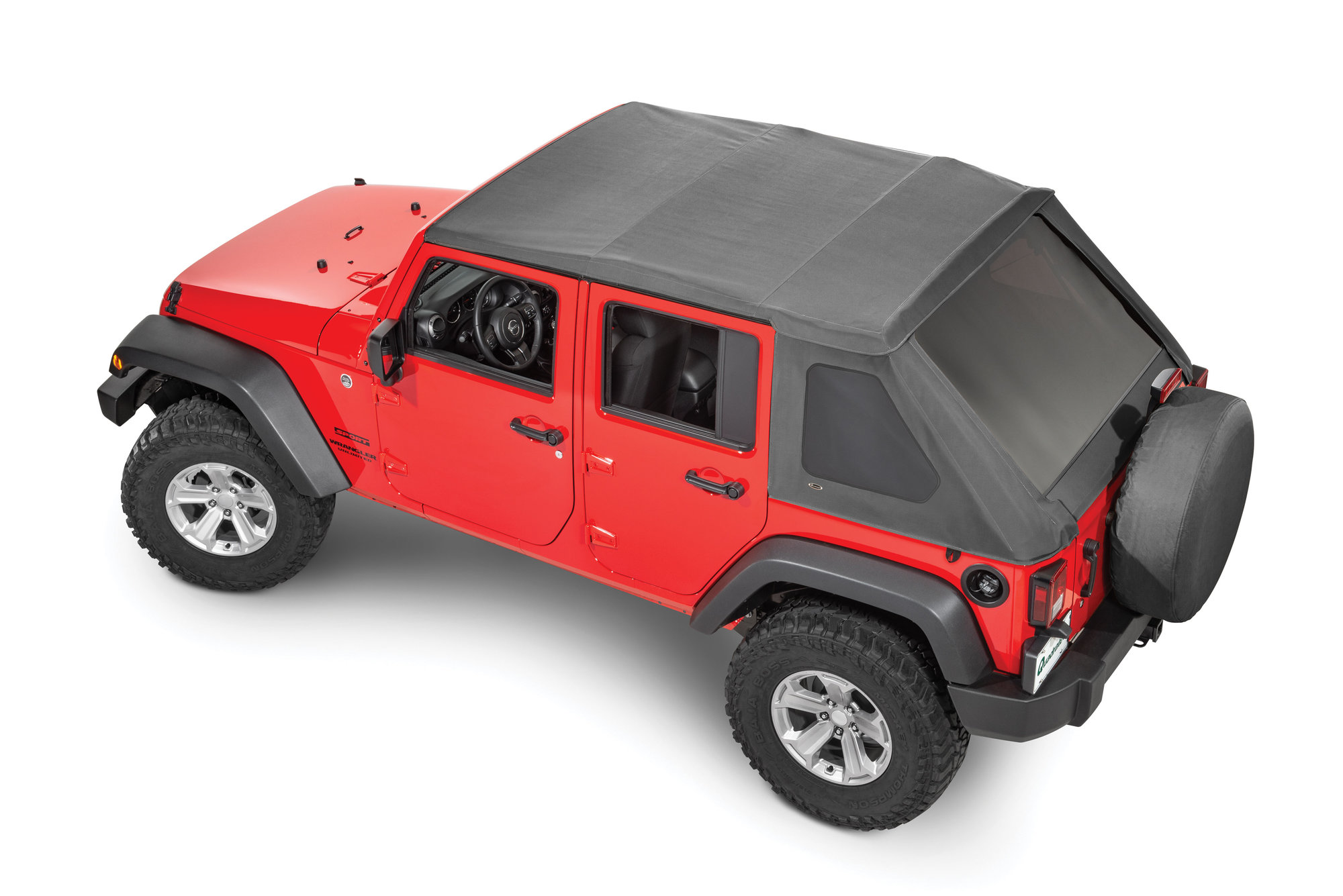
Replacement Soft Top And Windows
Sure, not everyone rolls with a soft top during the winter months, but plenty of people do stick with the soft cloth throughout the cold weather. After all, factory soft tops these days are plenty thick enough and retain that interior heat better than ever. Even most aftermarket versions are fine to use throughout the year.
Winter, though, can be a little tough on the exterior of those soft tops. Especially windows and zippers. That colder weather or any ice built up on the plastic can cause scratches, or cracks if tapped or somehow messed with during the day. Additionally, once that temperature drops below 70 degrees (which is true for the majority of the winter), then working soft top zippers can be dangerous and cause the top to not close right — potentially exposing the interior to Mother Nature.
As the weather turns warmer, you can do something about any of those issues with a new soft top. And if the vehicle's hardware is still good, you only need to replace the material.
Even better, you can just replace the side and rear windows if needed, easily eliminating ugly, cloudy, or otherwise scratched plastic.
Factory or aftermarket tops can work with existing hardware, or can include new hardware for those who need everything replaced.
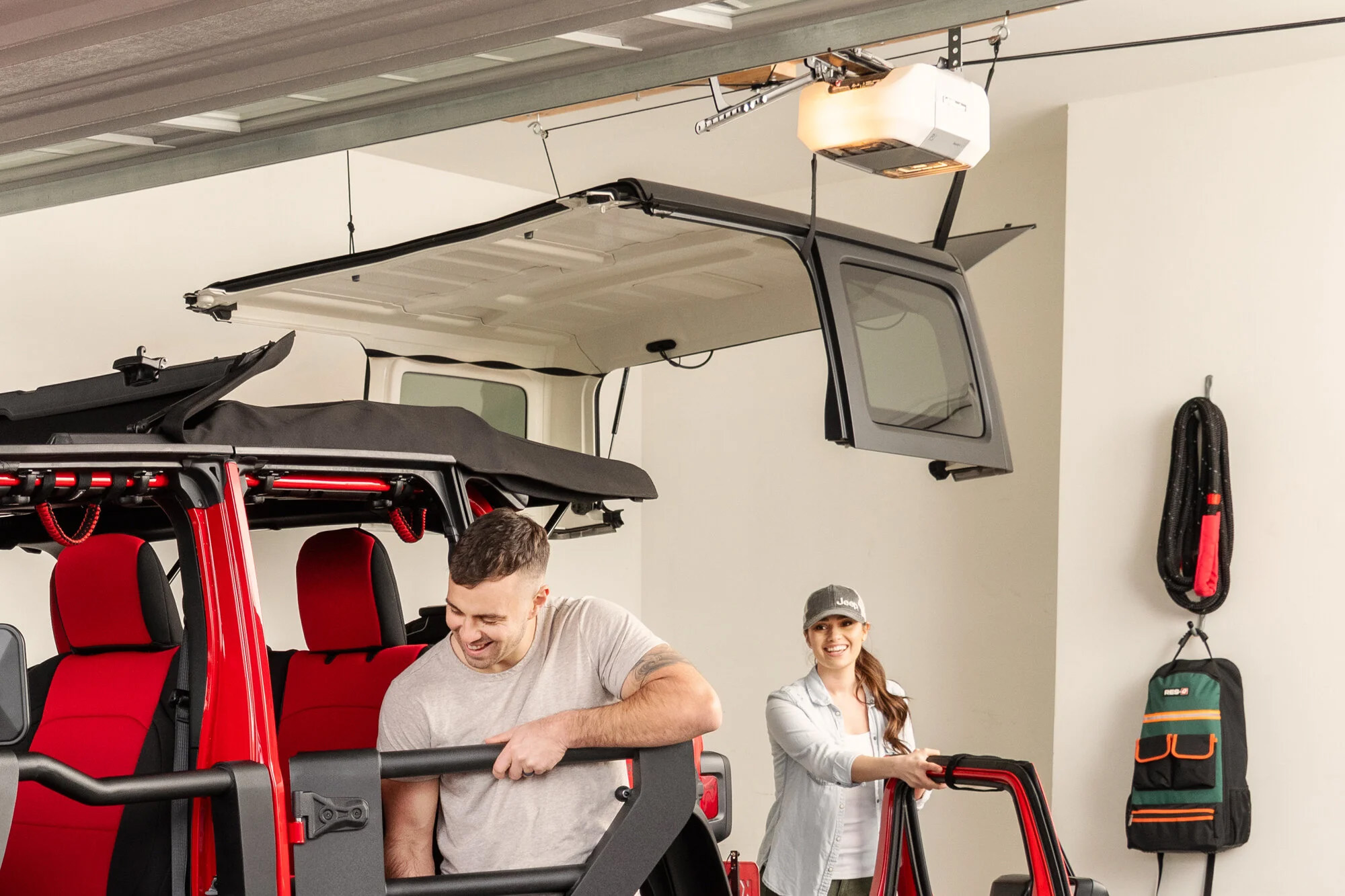
Top Storage
Like we’ve said plenty of times, one of the best things about warmer months in a Jeep is the ability to remove the vehicle’s top and drive around in a totally open-air cabin. And while that image is playing in your mind, take a second and think about what you are going to do with that top when it is off the vehicle. That’s right, how are you going to store the thing?
Now, soft top owners do have the ability to simply fold down their top without having to remove it completely, but side and rear windows can still present a problem when off the vehicle as that plastic can scratch up fairly easily. So a nice storage bag with lined interior makes it easy to slide those windows in, zip up, and store somewhere safe like a garage or porch when not in use. This way, nothing gets scratched or torn.
Hardtop owners need a bit more to think about, especially if they want to keep that top off for most of the warmer season. Backyard storage spots may not make sense simply because of weather issues, or other potential for damage, while simply placing it on a garage floor brings a whole other host of problems.
So what to do?
Well, two top products to store that hardtop are either a hardtop storage cart that you can wheel around to wherever you think is best, or you can install a hardtop hoist inside your garage or carport should you have the clearance.
For many, a cart simply makes the most sense because it eliminates the need to figure out if a hoist will work. But, if you have the room, a hardtop hoist does make it fairly simple to pull that top off the Jeep with just yourself on the job. Normally, it requires at least two people to take a hardtop off the vehicle and position on a storage cart.
Either way you go, though, you can rest assured by safely storing the top, you won’t have to worry about glass or material damage.

Alloy Wheels
Look over at a lot of driveways during the early part of spring and you’ll no doubt see plenty of folks with the garage door open, hauling out dented, damaged, or otherwise old stuff to either donate or throw away.
And now that the weather is warmer, it is an excellent time to check out your wheels and see how winter has affected them. Whether it is salt, road grime, brine, or some other material used to attack ice or snow, your wheels may have been caught in the crossfire and need replacement.
Or, if you've added larger tires and a suspension lift, then new wheels can help correct backspacing and offset.
Wheel offset is considered the distance from the center of your wheel to its mounting surface, which is the part of the wheel that comes together with the rotor on installation. This measurement helps define where the wheel will sit and is typically measured in millimeters.
The higher the offset, the more inward the wheel will install, leading to a narrower vehicle stance and less clearance between the suspension and your tire’s inside edge. The lower the offset, the more outward it will install which leads to a wider vehicle stance and more clearance between tire and suspension. This, generally, is better for those who have added a suspension lift along with larger tires.
Wheel backspacing is a related measurement, but a bit more complicated as it is the distance from your wheel’s inside edge to its mounting face - equal to half the wheel’s width plus offset, plus a half-inch.
Rims with more backspace have less inside wheel clearance and can potentially rub up against the vehicle’s suspension, steering system and other vehicle components. Less backspace on a wheel means more inside wheel clearance and little risk of rubbing. Again, those who have (or are planning) on lifting their vehicles and adding larger tires, should look for wheels with lower backspacing.
Another nice thing about new alloy wheels for your Jeep is weight. Most alloy wheels are made with either aluminum or magnesium, allowing engineers to shave a good amount of weight off the wheel versus steel alternatives — all without compromising the wheel’s performance.
Additionally, alloy wheels come in a variety of designs and colors so you can easily find something that compliments your Jeep's style or scheme.
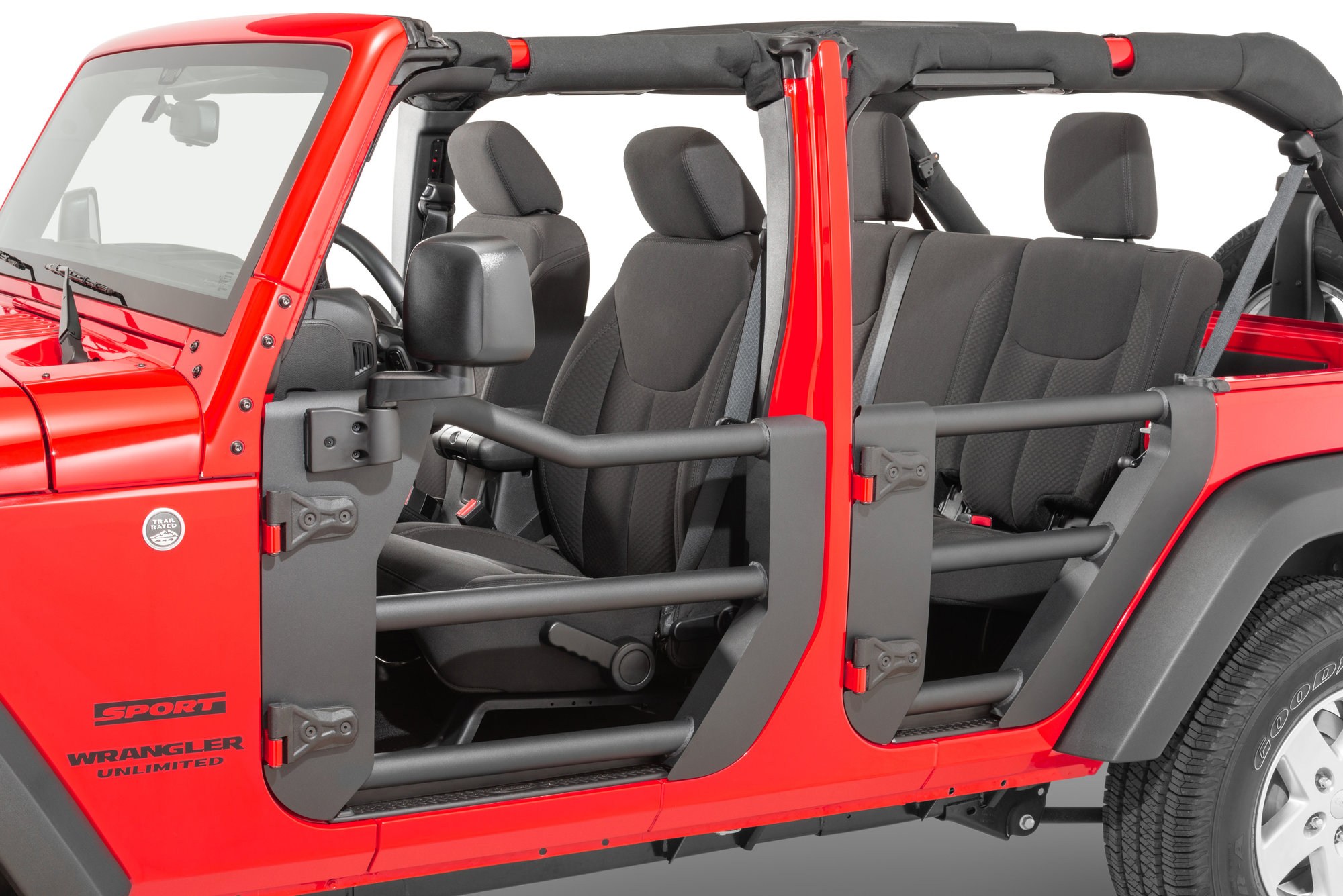
Tubular Doors
When the weather turns warmer and tops start coming off for long summer trips, it only makes sense that a lot of people also look at their Jeep doors. After all, a Jeep is one of the few vehicles actually made to have the doors come off.
However, when they do, it can cause some discomfort for those who don’t really like all that open space on their side, even though they still want to enjoy a real Jeep ‘airy’ driving experience. Additionally, it could be against the law in your area not to have doors on the vehicle, so it is always a good idea to check your state regulations before taking those doors off.
A great solution though is Jeep tubular doors. They are really the perfect alternative for anyone looking to pull off their doors, but needing something there.
Tubular doors provide just the right amount of air to material coverage, and most latch right on to existing door hardware. Some can even be outfitted with canvas bags to help with coverage and cargo storage.
Keep in mind, though, when you do remove the factory doors, you also lose the factory mirrors. Some tubular doors may come with their own mirrors, or accept the factory ones which makes things easy, but if not, it is a good idea to invest in either some relocation brackets or other style of workable mirrors.





















